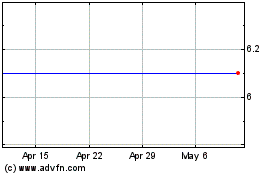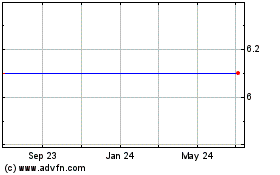By Ryan Tracy
WASHINGTON -- Stress tests long dreaded by executives at the
nation's largest banks are getting easier.
The Federal Reserve on Wednesday will release the final results
of this year's tests, which probe firms' ability to withstand a
severe financial shock. Officials made the tests easier for some
banks this year, and for the next time around they are preparing to
further change the exams in fundamental ways.
The most significant shift would remove a major risk for banks:
Failing the tests purely for subjective reasons. The so-called
qualitative part of the tests has in past years created
embarrassing failures for firms such as Citigroup Inc., Deutsche
Bank AG, and Banco Santander SA.
Fed officials now envision a system where firms would generally
only fail the test if their capital levels dipped below the level
the Fed views as healthy -- in other words for quantitative
reasons, not qualitative ones.
That likely means fewer test failures. Between 2014 and 2016,
the Fed gave banks a failing grade nine times. Only once did a bank
fail because of a low capital ratio: Zions Bancorp. in 2014.
The tests will continue to matter to investors. The Fed will
still use them to audit banks' plans to boost dividends and
buybacks for shareholders, and the numerical part of the exams will
still be crucial to determining those payouts.
Nevertheless, a reduced emphasis on the subjective aspects of
the exams could make the tests far less tense for bankers.
"The qualitative [part of the tests] is a lot of process work,"
William Demchak, chief executive of PNC Financial Services Group
Inc., said in a June interview.
He said the risk committee of the bank's board of directors
discusses aspects of the exams at each regular meeting, even though
sometimes "there is no reason to" do so because there haven't been
significant changes to the firm's program. "But we do, to prove [to
the Fed] we have a quality review."
PNC has never failed the tests.
The idea of a bank supervisor publicly calling out a bank's
failings has always made some policy makers nervous. After all, one
of supervisors' primary jobs is to prevent damaging "runs" that
occur when the public loses confidence in banks and withdraws
deposits en masse. If regulators have problems with bankers, they
almost always address them privately.
Former Fed governor Daniel Tarullo, who helped build the tests
while serving as the Fed's regulatory point man between 2009 and
earlier this year, has said the Fed departed from a tradition of
privacy in part because he and other officials were "stunned"
during the financial crisis at what they viewed as banks' inability
to quickly assess the risks they faced.
They created an annual stress test with two main parts. One
judges whether banks' plans for paying out capital to shareholders
would still allow them to withstand a hypothetical economic
downturn. The other part is a "qualitative" evaluation of how they
manage risks. If a bank fails either part, the Fed discloses they
have failed the tests and reject their requests for higher
payouts.
"The potential for embarrassing, public" stress-test failures
"was intended to, and has, focused the minds of banks' senior
management on their capital positions and capital planning
processes," Mr. Tarullo said in an April speech.
In 2014, Mr. Tarullo and other senior Fed officials judged
Citigroup hadn't made enough progress in improving risk management.
The firm failed the qualitative portion of the tests, and spent
about $180 million during the second half of that year to meet the
Fed's expectations. The failure also meant Citigroup couldn't boost
shareholder dividends.
Other firms spent tens or hundreds of millions of dollars on the
tests to ensure that they didn't end up in Citigroup's spot.
In 2017 Fed officials changed the rules. For 21 of 34 big banks,
the qualitative part of the tests would no longer be a basis for
failure. The 21 firms -- those with less than $250 billion in total
assets and less than $75 billion in assets in nonbank businesses --
could still face a reprimand from the Fed, but that would happen
privately as part of the Fed's year-round, ongoing oversight.
In proposing the rule change, the Fed cited "the high public
profile" of the tests and the risk that "noncomplex firms will
overinvest in stress testing," even though they pose less risk to
the financial system than larger, more complex peers.
The change means those 21 firms are breathing easier ahead of
Wednesday's results.
Mr. Tarullo also said in April "the time may be coming" to
remove the qualitative portion of the tests for all firms, even
large, complex ones such as Citigroup, J.P. Morgan Chase & Co.,
Bank of America Corp., and Goldman Sachs Group Inc.
Fed governor Jerome Powell, serving in Mr. Tarullo's role until
President Donald Trump nominates a Fed vice chairman in charge of
bank rules, supported the same idea in Senate testimony
Thursday.
"Many of our largest banking firms have made substantial
progress toward meeting supervisory expectations," Mr. Powell said.
"If that progress continues, I believe it will be appropriate to
consider removing the qualitative [part of the tests] for those
firms that achieve and sustain high-quality capital planning
capabilities."
Write to Ryan Tracy at ryan.tracy@wsj.com
(END) Dow Jones Newswires
June 25, 2017 07:14 ET (11:14 GMT)
Copyright (c) 2017 Dow Jones & Company, Inc.
Banco Santander (NYSE:STD)
Historical Stock Chart
From Mar 2024 to Apr 2024

Banco Santander (NYSE:STD)
Historical Stock Chart
From Apr 2023 to Apr 2024
